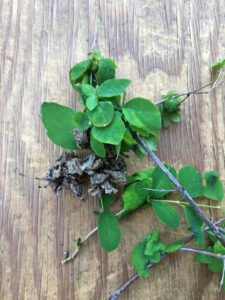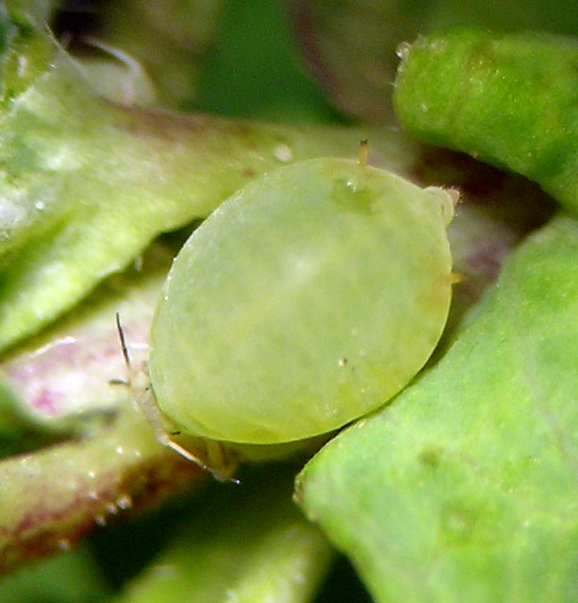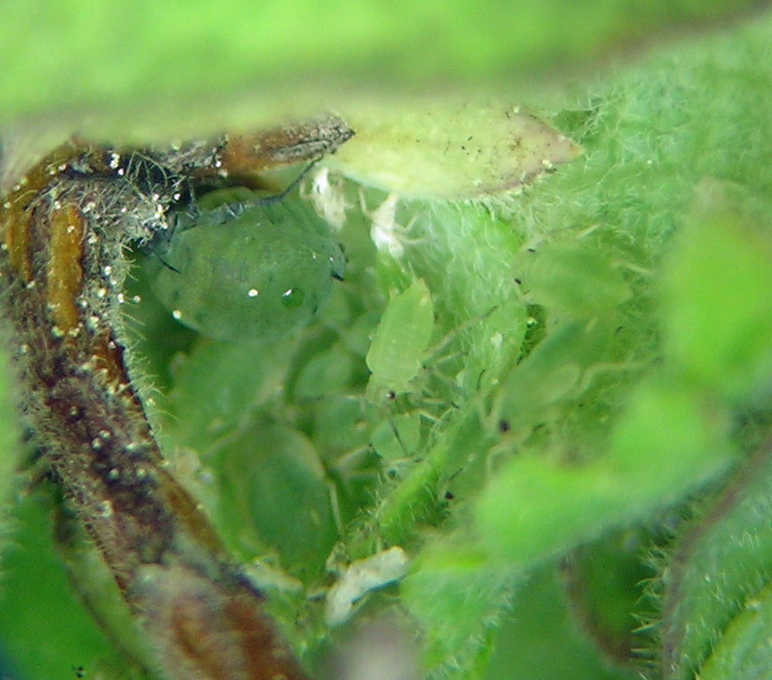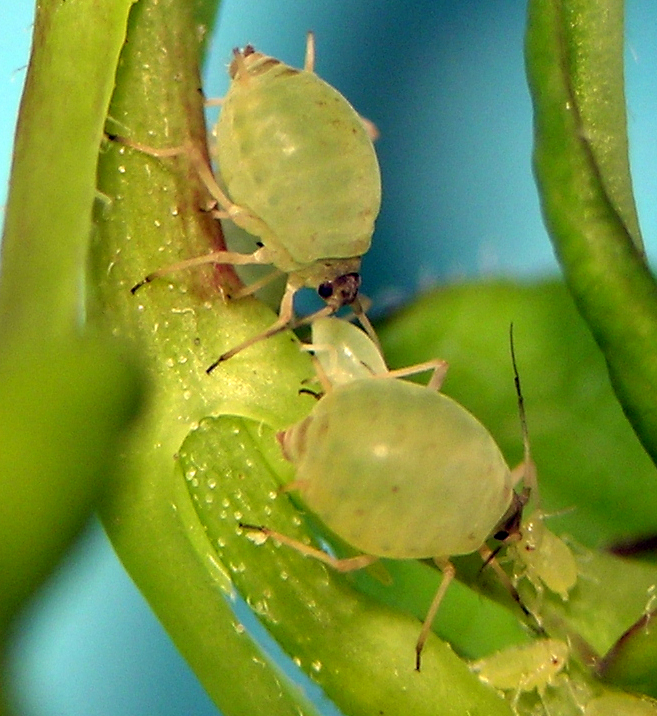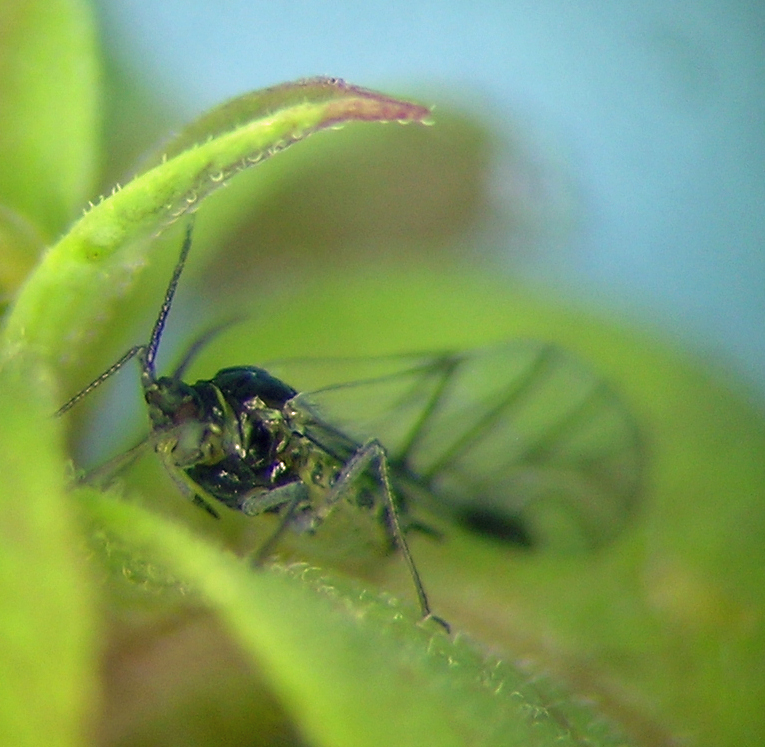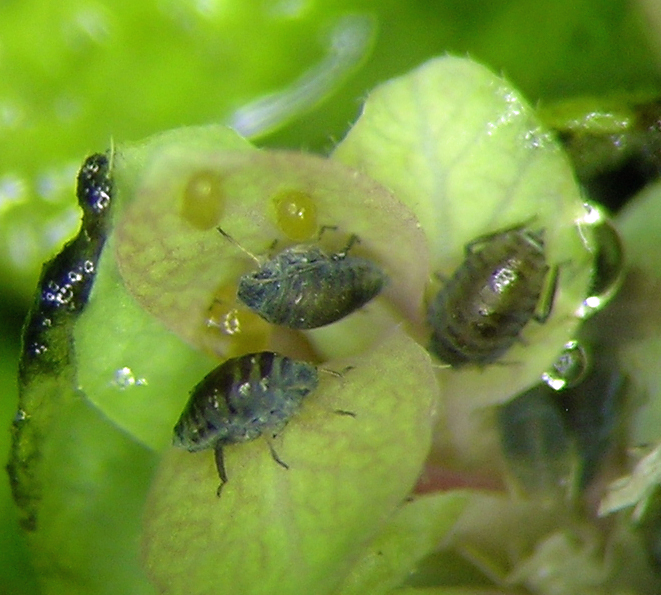Cedoaphis Oestlund
This is a group that seems almost certain to be more complicated and speciose than is currently understood. Blackman and Eastop note that there are two species that are likely not truly congeneric. I agree that C. maxsoni and C. incognita are likely not closely related, but I think there are at least two species lumped within C. incognita.
In fact, following my winter 2018 collection curation work, I am now hypothesizing 2-4 species currently confused under the name C. incognita. All of them are found on the foliage of Symphoricarpos in the spring, living among slightly curled leaves, and tended by ants. I am working hard to re-collect as many of these as possible on Symphoricarpos that are identified to species — it is possible that each of the four species actually specializes on one species of Symphoricarpos. For a few years I’ve known that the C. ‘incognita’ aphids are heteroecious, migrating to unknown summer hosts. However, in digging through original literature and subsequent synonymies, I found that the secondary host is in fact known — at least one species of Castilleja, living on the crowns of the plants (according to Hottes 1933). Too bad I had not dug hard enough to figure this out sooner. But, it gives me hope to eventually resolve my work on this genus. Only thing is, now I might have to learn the taxonomy of Castilleja, a non-trivial undertaking. Summer of 2019 proved that finding Cedoaphis on the crowns and roots of Castilleja is not hard. It seems to live on all the large perennial species in the high-elevation sagebrush communities that I frequent. Being tended by ants, it is easy to determine the infested plants by simply bending over the stems and watching for angry ants. I have looked at all my specimens thus collected for comparison to specimens on Symphoricarpos, but without luck in seeing morphological features that consistently separate groups. One problem in this genus (and a few others) is that morphology seems to vary a fair bit between migrating alate viviparae in spring versus those in fall. One is tempted at first to think that these easily detected differences have taxonomic significance but enough collecting in both spring and fall indicates clearly that the variation is seasonal.
The fundatrices of the Cedoaphis species on Symphoricarpos are highly specialized and have been confused with Aphthargelia in the past, probably due to uncertainty as to what each genus would look like in the fundatrix stage. Further, the dogma put forward in Palmer (1952) and elsewhere that the fundatrix lives on the roots in C. ‘incognita’ is obviously not the case for the Cedoaphis I get on Symphoricarpos.
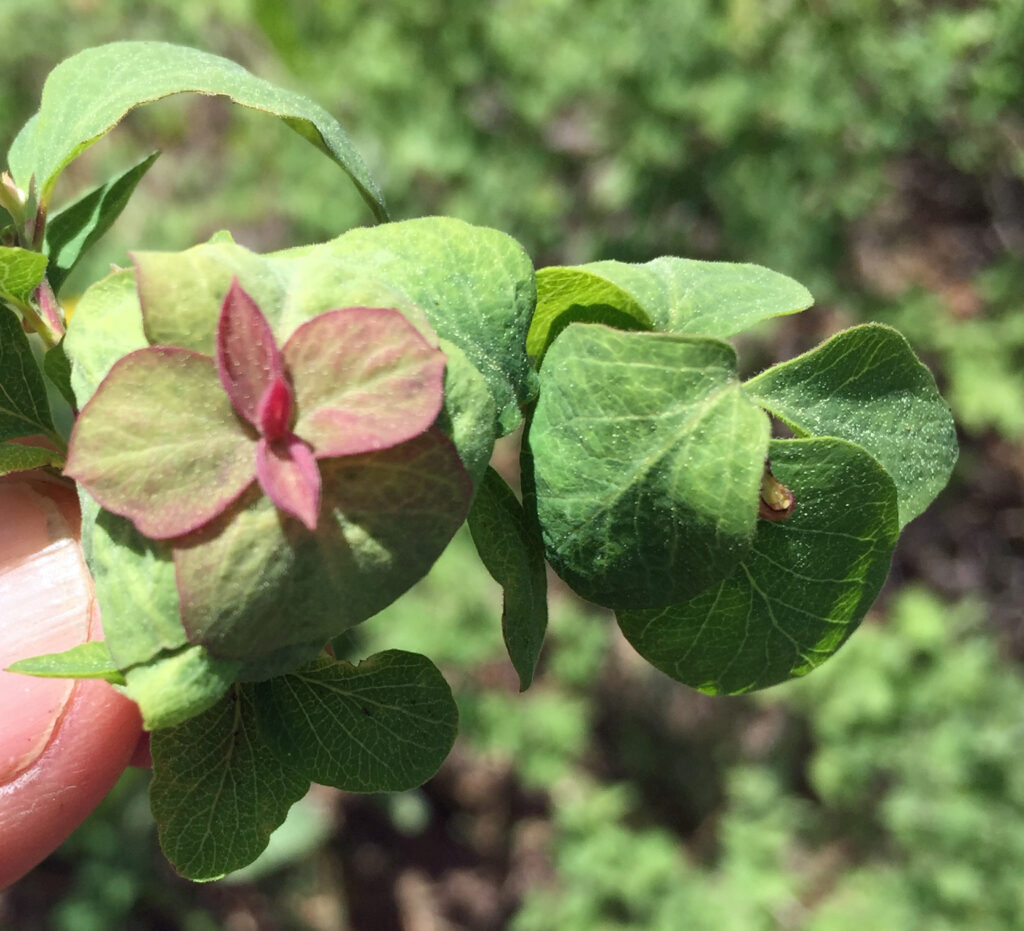
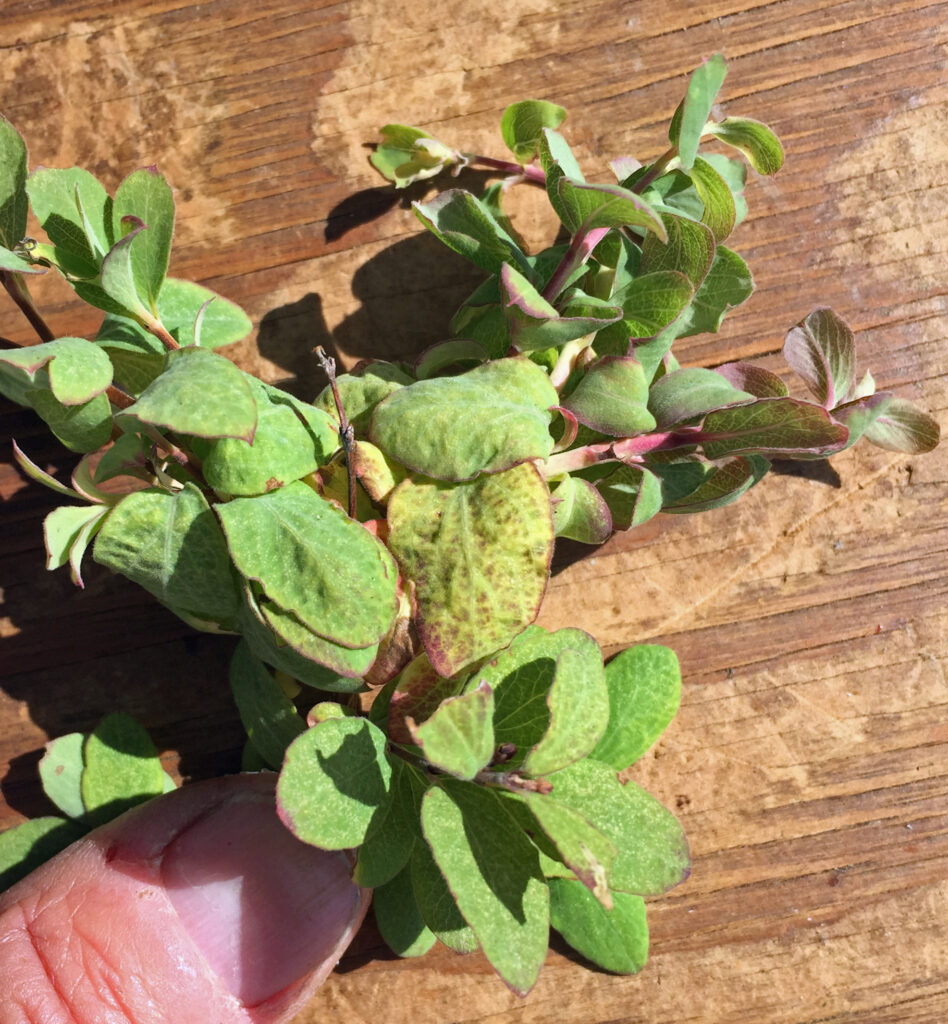
In spring of 2019 I continued the push to get spring forms of Cedoaphis from the all three species of Symphoricarpos near Lakeview: S. albus, S. mollis, and S. oreophilus. The weak point in my collecting has always been S. mollis. I see this plant fairly often, but Cedoaphis rarely lives on it. This year I lucked onto two good collecting sites and have managed to secure fundatrices and alate viviparae. Alas, no morphological evidence is apparent for separating Cedoaphis species inhabiting each of these shrub species.
I’ve also seen more of a very interesting Cedoaphis phenomenon: leaf-curl galls in the fall drying and remaining on the plant through winter, with new galls developing nearby in spring.
This represents one of two strategies used by this genus: (1) Most spring leaf-curl galls are abandoned by alate viviparae that presumably migrate to Castilleja, and these galls grow out of the deformation and are barely detectable by mid-summer; then in fall, males and alate viviparae remigrate to Symphoricarpos, produce very small oviparae, all without leaf-curl galls. (2) Some leaf-curl galls remain active all summer, the aphid inhabitants often suffering heavy losses to parasitoids and predators, but persisting nonetheless; many of these then have a population boom in late fall producing alate viviparae and sexuales. My hope is to some day feel comfortable deciding whether these two strategies point to two different species. This will be challenging without rearing and/or molecular work, but very fun.


